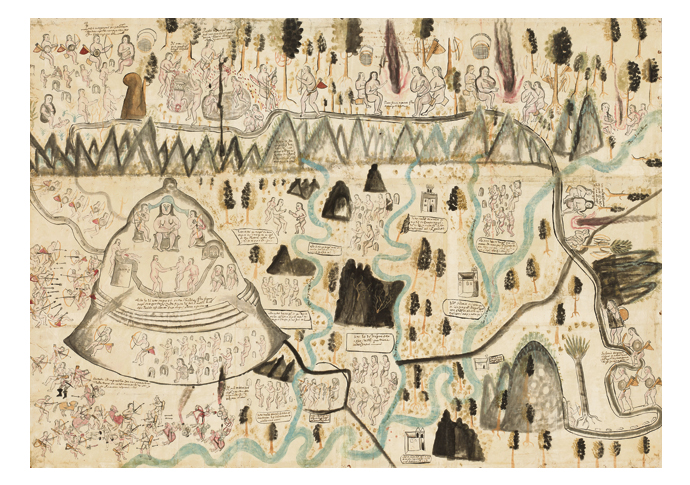Treasure trove
The RA is hosting a rare show of Hispanic art, as John Evans sees
Thursday, 2nd February 2023 — By John Evans

Francisco de Zurbarán, Saint Emerentiana, c1635-40, oil on canvas, 171.5 x 105.5cm [All works on loan from The Hispanic Society of America, New York, NY]
THE partial closure for renovations of the historic Hispanic Society Museum & Library in upper Manhattan, New York, is the occasion for a comprehensive exhibition of loans landing in the heart of London.
Spain and the Hispanic World,Treasures from the Hispanic Society Museum & Library runs in the Main Galleries at the Royal Academy of Arts until April 10.
Arranged chronologically, more than 150 works are on show, presenting “…a visual narrative of the history of Spanish culture, bringing together outstanding works from Spain and colonial Latin America, from antiquity to the early 20th century”.
In addition to spectacular paintings and drawings there is silver, ceramics, sculpture, jewellery, textiles, maps, manuscripts, and more.
Of the painters, Francisco de Goya (1746-1828) takes centre stage with his enigmatic portrait The Duchess of Alba, from 1797. And nearby is another intimate portrait, this of his friend the professional singer Pedro Mocarte. And there are smaller, light-hearted sketches, notably a sepia wash Peasant Carrying Woman, so simple but so expert.
Other notable oils displayed include Portrait of a Little Girl, c1638-42, by Diego Velázquez (1599-1660), The Penitent St Jerome by El Greco (1541-1614) and the beguiling St Emerentiana, c1635-40 by Francisco de Zurbarán (1598-1664).

Map of Tequaltiche, Teocaltiche, Jalisco, Mexico, 1584, watercolour and ink on paper, 86.3 x 124.5cm
The Hispanic Society Museum & Library was founded in 1904 by Archer Milton Huntington (1870-1955) and four years later he met Spanish painter Joaquín Sorolla (1863-1923).
In 1909 Sorolla’s grand exhibition there featured 356 paintings.
He was also commissioned to paint 14 murals that came to be known as Vision of Spain for the society’s Manhattan building. Large panoramic gouache sketches for this monumental work are on display in a final room of this exhibition.
The artefacts reveal a wide range of religious, philosophical, and societal movements influencing Spanish culture, whether Islamic, Celtic, Christian, Jewish, American, African or Asian.
They also include rare pieces from Spain’s colonial Latin America.
The result is a fascinating, if eclectic, mix.
Highlights include Giovanni Vespucci’s World Map, nautical chart from 1526, and the Map of Tequaltiche, 1584, made for Philip II.
There is a spectacular illuminated Bible in Hebrew which was taken to Portugal in 1492 when Jews were expelled from Spain. And from 1458 there’s a Book of Hours on black painted vellum, probably produced for Maria of Castile but never completed.
There’s a hoard of Celtiberian metalwork from c150-72 BC, including torques and bracelets, that was discovered in Palencia in 1911.
Sculptures include polychromed wood saints and reliquary busts, there are pots, earthenware, silks and textiles, and even a selection of large door knockers.
• At The Royal Academy of Arts, Burlington House, Piccadilly, W1J 0BD, details 020 7300 8090 or www.royalacademy.org.uk